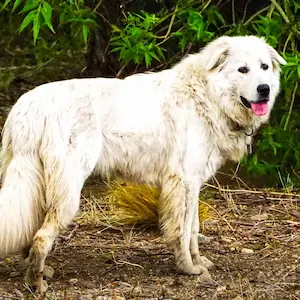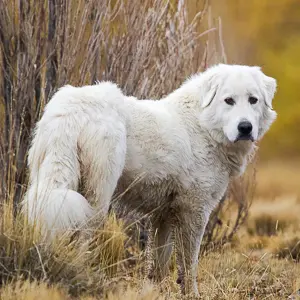Context and objectives
Since 2022, we have been working on the development of the Livestock Guardian Dog project, which aims to reduce the use of traditional predator control methods (toxic baits and hunting), which often have a high collateral impact on native fauna. Through this alternative tool, we promote coexistence between native carnivores—such as foxes and pumas—and livestock production, minimizing conflicts and favoring the conservation of biodiversity.
Our actions
- We breed and imprint livestock guardian dogs. We generate information on the success of working with Guardian Dogs for farmers.
- We study the impact of these dogs on native species.
- We study the behavior of dogs in different contexts, such as different field conditions, amount of livestock, number of predators, number of dogs working together, etc.
- We promote the training of producers and carry out long-term monitoring of the dogs that we deliver in different productive establishments. We promote the transfer of capacities to the state.
Protagonists


Habitat and behavior
Livestock guardian dogs go through an “imprinting” process from birth that involves several conditions. On the one hand, the progenitor is accustomed to the presence of sheep. The puppies’ birthing enclosure is connected to a space with sheep, so that the puppies become accustomed to the smell, appearance, and presence of the sheep from birth. The exposure of the puppies to the sheep is progressively done during their growth in order to strengthen the bond that will determine the behavior of protecting the sheep in the future.
Feeding
Livestock guardian dogs eat balanced feed available in feeders located at various points on the field where they are working with the sheep. The permanent availability of food prevents the dog from resorting to other sources of protein (wild species or even sheep). For this reason, good management of the dog working in the field is crucial for its use as a support tool for livestock activity to work.
Reproduction
The enclosures in which the dogs that will be destined for this activity are born must be close to sheep, which will allow the imprinting process to begin.
Curiosity
Livestock guardian dogs protect sheep as if they were part of their herd, based on the sense of belonging fostered during “imprinting” in their first months of life. For the same purpose, in other contexts, livestock guardian dogs can be replaced by donkeys or llamas.
Threats
Poor dog management can determine the malfunction of the tool. A deficient imprint or a lack of follow-up of the dog that allows correcting deviations from the expected behavior can end in failure. Part of this also refers to limiting contact with humans, since if a bond is generated with people, it will hardly remain active with the sheep and would abandon them to approach the areas with humans (e.g. the houses and posts on the ranches).





